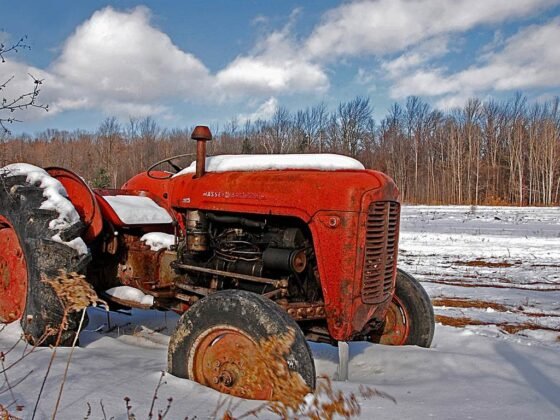Table of Contents Show
As a homeowner, you take great pride in the appearance of your property. You want it to stay clean and attractive with excellent curb appeal, which means you will need to look after the exterior condition of your house at least once a year.
The holidays are coming up, and the last thing you need is to be embarrassed when friends and family come over and your house is encrusted in mildew, algae, tree mold, soot, or general dirt and grime. When mom and dad and Aunt Phoebe arrive, you want them to ooh and ahh, not judge you for your lack of attention to detail.

Even if your home is brand new, its exterior can go from bright and beautiful to smudgy and weathered in a relatively short period of time. This will all depend on the materials it’s made of, environmental conditions where you live, and how much attention and care you put into its upkeep.
If you’re thinking this is going to be a huge pain, relax. With the right tools and knowledge, you’ll see there’s no need to be intimidated!
Is your home’s siding looking dull, dirty, and dingy? Learn how to clean house siding effectively in our ultimate guide today.
The Basics of How to Clean House Siding
The most common complaint that homeowners make about their home’s external appearance is that mold or mildew continually shows up and must be removed regularly. Unfortunately, most of us don’t think about it until it starts to look ugly, and then we may not have time to take care of it right away.
To avoid this embarrassment, plan ahead. If you do it yourself, you’ll want to clean your exterior at least once a year and have the cleaning supplies on hand.
Simple tools like a brush and garden hose or a power washer are all you need. Work your way methodically around the outside until you’ve covered the entire surface area.
You can use pre-made cleaning solutions or make your own from easily purchased ingredients. Vinegar and water solutions are very popular since they don’t contain toxins and can be adjusted to whatever surface material you’re trying to clean.
If your home is large and has an extensive surface area to clean, the project should still take no more than a day—or maybe two, if you prefer to work a little at a time. If you don’t want to do it yourself, you should consider hiring a maintenance specialist such as Wrightlook Pressure Washing to take care of it for you.
Know When and How to Clean Your Siding
In addition to knowing how to clean mildew off house siding, it’s important to know what time of year and how frequently it should occur.
You should schedule regular cleanings based on your home’s materials and how quickly they become dirty, as well as the weather and environmental conditions where you live.
If you live in an area of high humidity or near the ocean, expect to have to clean your siding fairly often due to the equally high prevalence of mold and algae growth in those types of climate.
Likewise, if you are located in an industrial area with heavy air pollution or wood-burning heating elements. If you live in a heavily wooded area, expect to have to deal with tree moisture and molds.
Residential siding is typically manufactured in vinyl, brick, stucco, wood, or aluminum, so your cleaning strategy will have to depend on the material used in your home. For example, you would not want to power wash brick or wood siding, but using a bristle brush on vinyl would probably not be as effective as power washing.
Wood siding tends to be the most high-maintenance of all the siding types. It should be cleaned up to twice a year, while vinyl siding can last up to several years without needing attention.
Read Also:
Finding the Right Supplies
All the supplies you will need for cleaning house siding can be affordably purchased at your local hardware store. You can buy long-handled bristle brushes, pump sprayers, cleaning cloths, scrubbers, professional cleaning chemicals, and common household cleaners like bleach and Lysol.
Don’t forget to wear protection while you are cleaning, too! Especially if you use a pressure washer or there’s any chance of getting chemicals in your eyes such as on a windy day. Goggles and work gloves will help ensure that you stay safe.
A Walk Through the Process
Let’s say you are going to clean your home exterior today. What are the materials, tools, and steps? Here are the steps involved, to help you understand what you need to do and picture the process in your mind’s eye.
Step 1- Assess the damage: How dirty is your home? Are you going to need a power washer, or will a scrub brush and garden hose be adequate? When was the last time the house was cleaned?
Step 2- Gather supplies: Do you need a ladder? Will you need to rent a power washer, or can you use one you already have on hand? You will also need to buy a cleaning solution or vinegar at this stage of the process if you don’t already have them on hand.
Step 3- Mix your own cleaning solution or prepare to use a commercial one: This shouldn’t take up too much time. You can find popular recipes online to make your own, or use a commercial cleaning agent to get the job done.
Step 4- Section off the exterior into manageable chunks: Decide where you want to start the project if you plan to work front to back or side to side. Do you need to protect any windows or workaround shrubs and bushes? What’s the logical progression to follow?
If your home is particularly large, you could work in sections that could be done between breaks. This would allow you to maintain your energy for a longer period.
Step 5- Do the cleaning: Get started. Since you’ve already done so much preparation, this part should go smoothly. Take breaks and ensure you stay hydrated.
Step 6- Evaluate the result: After you’ve gone over the entire surface, take a break, and then go back and look at the result.
One strategy to help you decide if you’ve done enough is to take a photo before you start so you can compare the “before” and “after” appearance. You can also cross the street and look at it from a distance. Do you see any stains or dark areas that need more work?
Don’t put all this work into cleaning and then settle for a less-than-desired outcome. If the result still doesn’t meet your expectations, consider using a different cleaning agent or another type of brush or scrubbing device.
Step 7- Clean up and be proud of your work! Pack away your equipment and enjoy your newly clean house sizing.
Caution: Avoid Making These Mistakes
Now you’ve seen the process from start to finish. It’s not complicated but does take some time and planning ahead. Additionally, here are a few tips to keep in mind so you don’t wind up having to undo any mistakes.
When cleaning vinyl siding with a power washer, be sure to avoid spraying in an upwards direction. This is necessary because if you get water behind the siding, there could be heavy mold and mildew growth between the siding and the house—which would be difficult to remove without tearing out your entire siding installation!
Additionally, when you clean stucco or wood finishes, avoid using high-pressure water treatments, as these can destroy the surface. Stucco is usually cleaned with a garden hose and a bristle brush, or sometimes a hand-pumped sprayer, from the bottom up to avoid the accumulation of dirt along the base of the wall.
Most exterior surface materials respond well to a garden hose and warm, soapy water, so if you aren’t sure what to use at first, you can always do a pre-wash with these and see if an alternative method is necessary.
We’re Here to Help
If you’ve gotten to the end of this article and feel informed on how to clean house siding—but still don’t want to tackle it on your own—consider hiring a professional to do it for you. It will save you from the hassle and time commitment, and you won’t need to buy and store tools and cleaning supplies.
Are you eager to check out more guides on how to maintain your home to its best? If so, feel free to check out our website.










